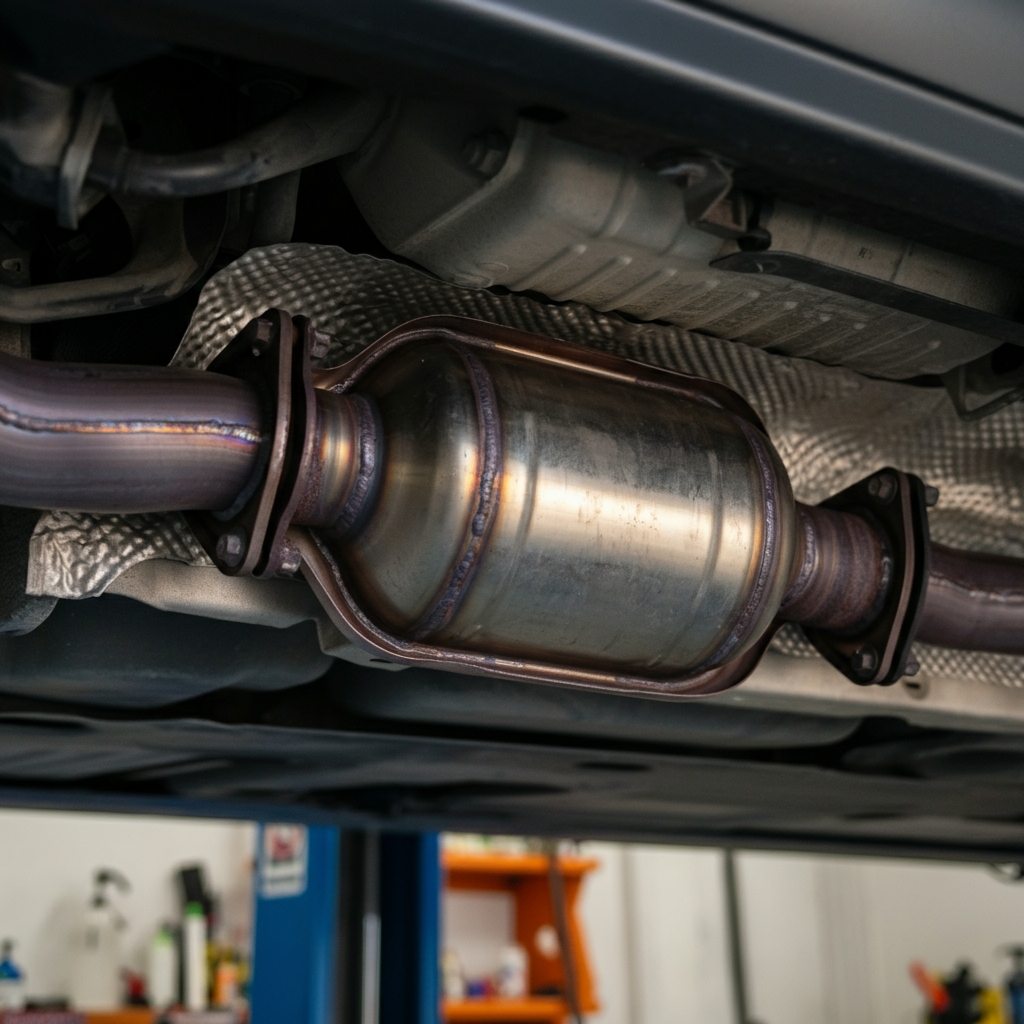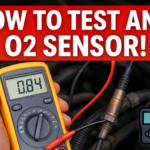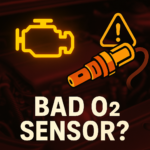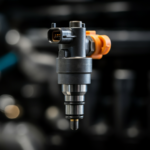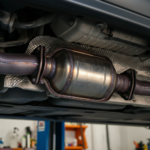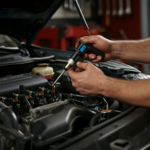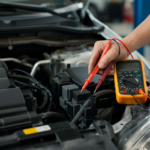A failing catalytic converter can cause significant problems for your vehicle, from reducing fuel efficiency to impacting engine performance. For car owners, DIY mechanics, and auto enthusiasts, it’s crucial to identify the signs of a bad catalytic converter early. This guide covers everything you need to know about diagnosing catalytic converter issues, including symptoms, causes, and solutions.
What is a Catalytic Converter?
A catalytic converter is an essential part of your vehicle’s exhaust system. It converts harmful emissions, like carbon monoxide and unburned fuel, into less harmful gases such as carbon dioxide and steam. The converter has a ceramic core coated with precious metals like platinum, palladium, and rhodium that facilitate these vital chemical reactions.
When a catalytic converter is functioning correctly, it helps reduce pollution and ensures your car complies with emissions regulations. However, if it becomes clogged or fails, it can cause several issues that negatively affect your vehicle’s performance.
Common Symptoms of a Bad Catalytic Converter
If you’re wondering how to tell if your catalytic converter is bad, here are the most common signs to watch for:
1. Reduced Performance and Acceleration
A blocked cat converter restricts the flow of exhaust gases, causing pressure to build up in the exhaust system. This can make your engine feel sluggish, leading to poor acceleration and impaired performance.
2. Rotten Egg Smell
One of the more distinctive signs of a clogged catalytic converter is a sulfuric “rotten egg” smell. This odor results from unburned hydrogen sulfide in the exhaust due to improper catalytic conversion.
3. Rattling Noise Underneath the Car
If your catalytic converter is damaged internally, tiny fragments from the ceramic core may break loose, creating a rattling sound. This noise is more noticeable when starting your engine or accelerating.
4. Poor Fuel Economy
A clogged catalytic converter disrupts the air-fuel ratio in your engine, forcing it to burn more fuel than usual. If you notice a sudden drop in fuel efficiency, it could be one of the bad catalytic converter symptoms.
5. Failed Emissions Test
A sudden failed emissions test can be a direct result of converter problems. The part may no longer be effective at reducing harmful gases, which results in higher emissions that fail to meet regulatory standards.
6. Engine Misfires
Continuously running with a failing catalytic converter can cause unburned fuel to overheat and lead to engine misfires. Over time, this could result in damage to other components like the oxygen sensor (O2 sensor) or even your engine.
7. Check Engine Light
A malfunctioning catalytic converter can trigger your vehicle’s Check Engine Light (CEL). The onboard diagnostics system detects irregularities in exhaust gases, such as reduced performance in the converter’s oxygen sensor.
For more details on engine performance issues, check out How to Tell if Your Car Is Misfiring.
What Causes a Catalytic Converter to Go Bad?
Several factors can lead to exhaust converter problems over time. Here are the most common causes of catalytic converter failure:
- Oil or Coolant Leaks: These can contaminate the catalytic converter, rendering its components ineffective.
- Excess Unburned Fuel: If the engine misfires, unburned gasoline can enter the converter, causing it to overheat and break down.
- Debris and Build-Up: Dirt and contaminants can clog the converter, leading to symptoms of a stopped-up catalytic converter.
- Long-Term Wear and Tear: Catalytic converters typically last between 70,000 and 100,000 miles under normal driving conditions.
Identifying and addressing these issues promptly can prevent further catalytic converter problems and costly repairs.
How to Diagnose a Bad Catalytic Converter
If you’re still asking yourself, “how can you tell if your catalytic converter is bad?,” these diagnostic steps will help you confirm the issue:
1. Perform a Visual Inspection
Check for discoloration, dents, or other visible damage to the catalytic converter. Look for signs of overheating, like a bluish tint on the exterior of the converter.
2. Use an OBD-II Scanner
Plug an OBD-II scanner into your vehicle to detect diagnostic trouble codes (DTCs). Common codes like P0420 and P0430 often indicate cat converter problems.
3. Conduct a Backpressure Test
A backpressure test measures exhaust flow to determine if the catalytic converter is clogged. Excessive pressure indicates a blocked converter.
4. Heat up the Converter
Using an infrared thermometer, measure the temperatures at both ends of the converter. If the input temperature is higher than the output temperature, it’s likely clogged.
5. Seek Professional Help
Always consult a trusted mechanic if you’re unsure how to diagnose a bad catalytic converter, as some issues may mimic similar symptoms.
Additional Resource
Learn more about caring for catalytic converters and exhaust systems at UTI Blog.
Can You Fix or Prevent Catalytic Converter Problems?
While some stopped-up catalytic converter symptoms can be resolved by cleaning the converter using fuel additives, severe damage usually requires replacement. That’s why prevention is key.
Tips to Avoid Catalytic Converter Problems
- Perform Regular Maintenance: Replace spark plugs, air filters, and oil on time to keep the engine running smoothly.
- Use High-Quality Fuel: Low-quality or contaminated fuel can clog the cat converter.
- Fix Oil Leaks Immediately: Prevent oil from entering and contaminating the converter.
- Avoid Short Drives: Short trips can prevent the converter from reaching optimal operating temperature for cleaning itself.
By following these practices, you can prolong the life of your catalytic converter and avoid costly repairs.
Final Thoughts
Knowing how to know if your catalytic converter is bad can save you time and money on repairs while maintaining your car’s performance and reducing emissions. From identifying signs of a clogged catalytic converter to diagnosing issues and preventing problems, this guide offers practical advice for vehicle owners, DIY mechanics, and car enthusiasts alike.
Need help managing other vehicle performance issues? Check out How to Tell If Your Car Is Misfiring.
Prevent headaches before they start—all it takes is a little know-how to keep your car in peak
